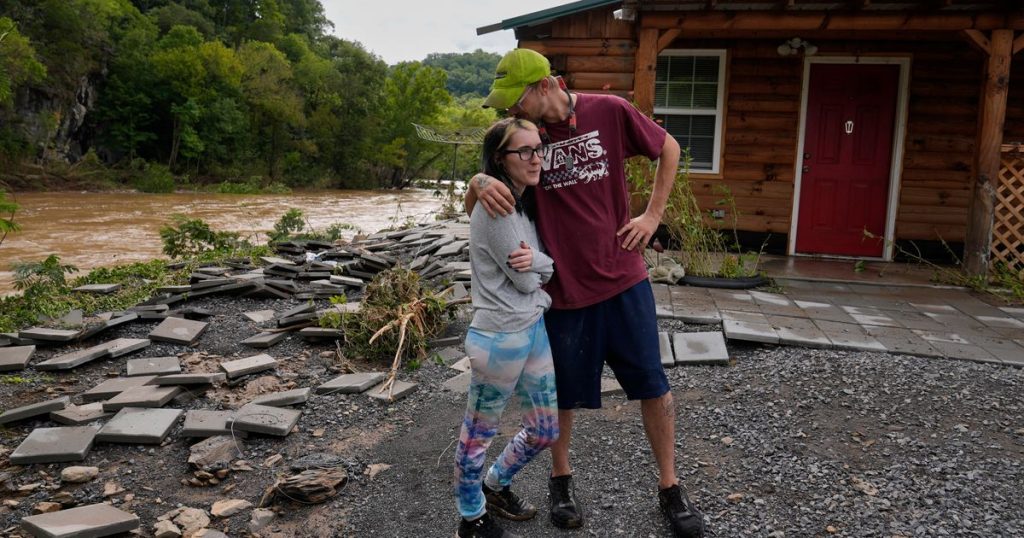Western North Carolina and eastern Tennessee were hit hard by the remnants of Hurricane Helene, leaving many areas isolated due to damaged roads, power outages, and lack of cellphone service. Hundreds of roads were closed and more than 700,000 customers were without power in North Carolina. Asheville, North Carolina’s largest mountain city, was particularly affected, with neighborhoods like Biltmore Village and the River Arts District underwater. Emergency officials worked to provide essential supplies and set up distribution hubs for food and water.
Rescue efforts were underway as people were stranded by rising floodwaters, including those trapped on the rooftop of a flooded hospital. Many residents were caught off guard by the magnitude of the storm, with emergency services struggling to reach loved ones due to communication outages. Buncombe County officials reported loss of life but were unable to provide specifics as they worked to reconnect with next of kin. The storm’s impact left an unknown number of people missing or unreachable, adding to the chaos and worry in the affected areas.
Residents in the region faced shortages of gasoline, no cellular service, and the need to boil water for safety. The storm’s devastation was widespread, with many communities left facing months or years of recovery efforts. Volunteers like Genevieve Preece opened their homes as shelters, while utility crews worked to restore power and clear debris from blocked roads. The scale of the damage in East Tennessee prompted disbelief from officials and residents alike, with many areas experiencing unprecedented flooding and destruction.
Gov. Bill Lee of Tennessee and other officials surveyed the damage from the air, calling the scene “heartbreaking” and acknowledging the long road to recovery ahead. Emergency evacuations were ordered in many areas, with residents like Kendale Ball forced to abandon businesses and homes due to rising floodwaters. Efforts to monitor stressed dams and prevent breaches added to the urgency of the situation, putting communities along riverbanks on high alert. Despite the challenges faced by those affected, stories of resilience and neighborly support emerged as people banded together to navigate the crisis.
Asheville, a vibrant hub of tourism and culture, was left reeling from the impact of the storm, with popular neighborhoods and attractions submerged underwater. Cleanup efforts were hampered by the ongoing communication outages, leaving officials struggling to coordinate relief operations and account for all residents. The region’s reliance on tourism and local businesses meant that the economic impact of the storm would be felt for months to come. Local businesses like Simpl Cafe and residents like Elin Fisher faced significant losses and challenges in the aftermath of the storm, highlighting the need for community support and recovery efforts.
Overall, the aftermath of Hurricane Helene’s remnants in North Carolina and Tennessee left a trail of destruction, isolation, and uncertainty in its wake. Emergency services and volunteers worked tirelessly to rescue stranded residents, provide essential supplies, and assess the extent of the damage. The resilience and solidarity of affected communities were put to the test as they faced an unprecedented natural disaster, with recovery efforts expected to take months or even years to fully rebuild and restore the region. The storm served as a stark reminder of the power of nature and the importance of preparedness and mutual aid in times of crisis.








